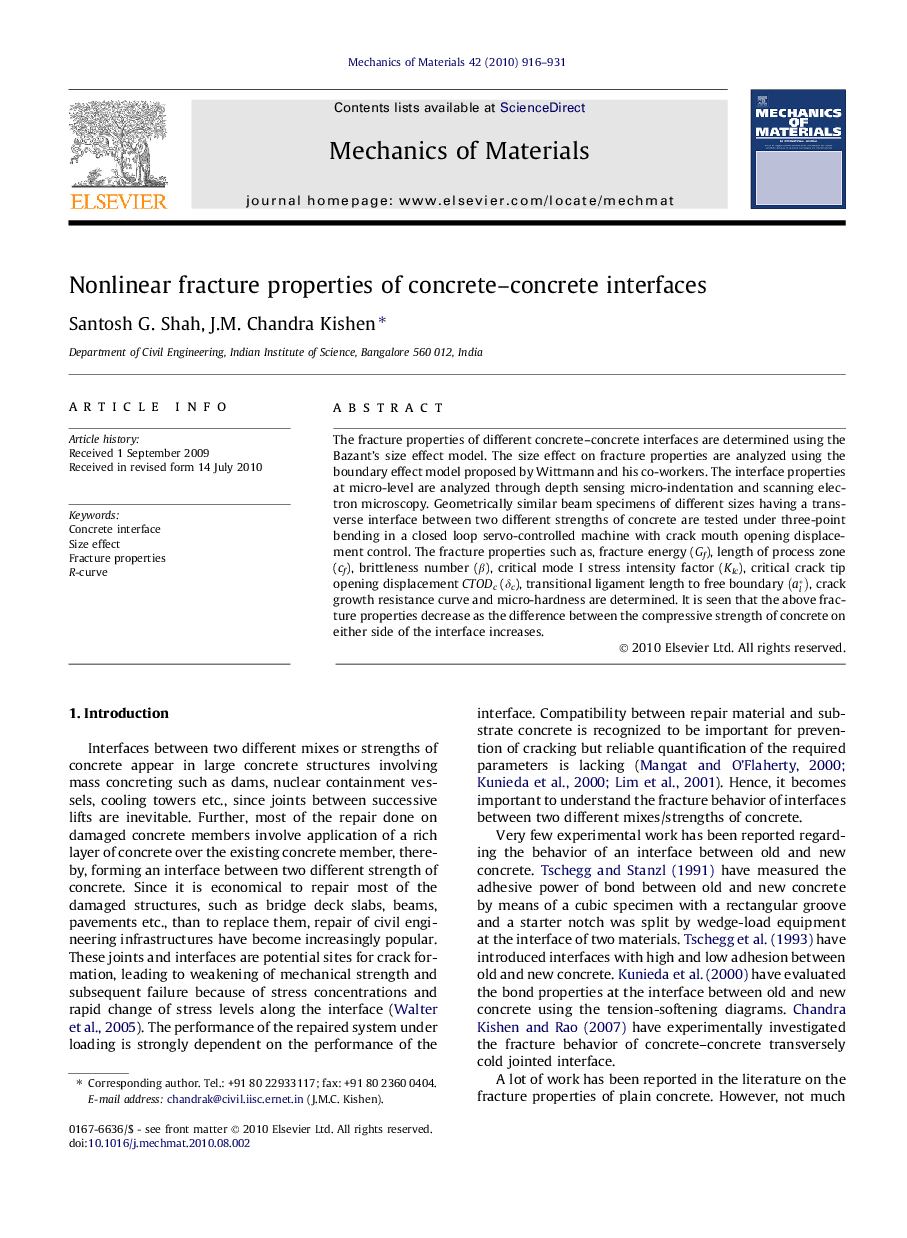| کد مقاله | کد نشریه | سال انتشار | مقاله انگلیسی | نسخه تمام متن |
|---|---|---|---|---|
| 800823 | 1467512 | 2010 | 16 صفحه PDF | دانلود رایگان |

The fracture properties of different concrete–concrete interfaces are determined using the Bazant’s size effect model. The size effect on fracture properties are analyzed using the boundary effect model proposed by Wittmann and his co-workers. The interface properties at micro-level are analyzed through depth sensing micro-indentation and scanning electron microscopy. Geometrically similar beam specimens of different sizes having a transverse interface between two different strengths of concrete are tested under three-point bending in a closed loop servo-controlled machine with crack mouth opening displacement control. The fracture properties such as, fracture energy (Gf), length of process zone (cf), brittleness number (β), critical mode I stress intensity factor (KIc), critical crack tip opening displacement CTODc (δc), transitional ligament length to free boundary al∗, crack growth resistance curve and micro-hardness are determined. It is seen that the above fracture properties decrease as the difference between the compressive strength of concrete on either side of the interface increases.
Journal: Mechanics of Materials - Volume 42, Issue 10, October 2010, Pages 916–931